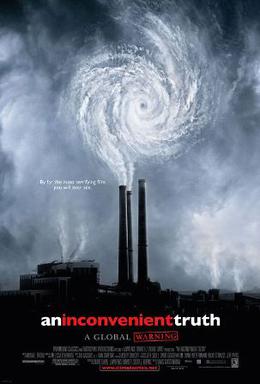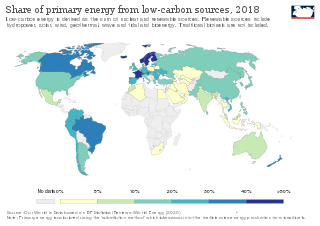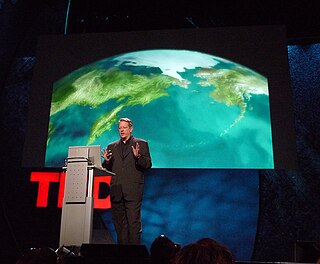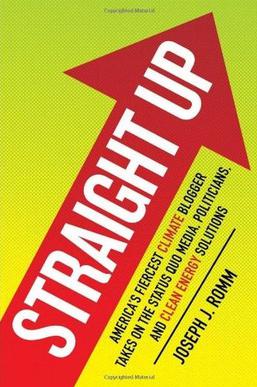
Energy is sustainable if it "meets the needs of the present without compromising the ability of future generations to meet their own needs." Most definitions of sustainable energy include considerations of environmental aspects such as greenhouse gas emissions and social and economic aspects such as energy poverty. Renewable energy sources such as wind, hydroelectric power, solar, and geothermal energy are generally far more sustainable than fossil fuel sources. However, some renewable energy projects, such as the clearing of forests to produce biofuels, can cause severe environmental damage.

Climate change mitigation is action to limit climate change by reducing emissions of greenhouse gases or removing those gases from the atmosphere. The recent rise in global average temperature is mostly due to emissions from unabated burning of fossil fuels such as coal, oil, and natural gas. Mitigation can reduce emissions by transitioning to sustainable energy sources, conserving energy, and increasing efficiency. It is possible to remove carbon dioxide from the atmosphere by enlarging forests, restoring wetlands and using other natural and technical processes. Experts call these processes carbon sequestration. Governments and companies have pledged to reduce emissions to prevent dangerous climate change in line with international negotiations to limit warming by reducing emissions.

Coal Pollution Mitigation, sometimes also known as Clean Coal, is a series of systems and technologies that seek to mitigate health and environmental impact of coal; in particular air pollution from coal-fired power stations, and from coal burnt by heavy industry. Clean Coal primarily focuses on removing sulfur dioxide (SO2) and nitrogen oxides (NOx), the most important gasses which cause acid rain; and particulates which cause visible air pollution, illness, and premature deaths. It also reduces fly ash and reduces emissions of radioactive materials. Mercury emissions can be reduced up to 95%. Capturing carbon dioxide emissions from coal is also being pursued.

Carbon capture and storage (CCS) is a process in which a relatively pure stream of carbon dioxide (CO2) from industrial sources is separated, treated and transported to a long-term storage location. For example, the carbon dioxide stream that is to be captured can result from burning fossil fuels or biomass. Usually the CO2 is captured from large point sources, such as a chemical plant or biomass plant, and then stored in an underground geological formation. The aim is to reduce greenhouse gas emissions and thus mitigate climate change. The IPCC's most recent report on mitigating climate change describes CCS retrofits for existing power plants as one of the ways to limit emissions from the electricity sector and meet Paris Agreement goals.

An Inconvenient Truth is a 2006 American documentary film directed by Davis Guggenheim about former United States Vice President Al Gore's campaign to educate people about global warming. The film features a slide show that, by Gore's own estimate, he has presented over 1,000 times to audiences worldwide.

Carbon sequestration is the process of storing carbon in a carbon pool. Carbon sequestration is a naturally occurring process but it can also be enhanced or achieved with technology, for example within carbon capture and storage projects. There are two main types of carbon sequestration: geologic and biologic.

Joseph J. Romm is an American researcher, author, editor, physicist and climate expert, who advocates reducing greenhouse gas emissions to limit global warming and increasing energy security through energy efficiency and green energy technologies. Romm is a Fellow of the American Association for the Advancement of Science. In 2009, Rolling Stone magazine named Romm to its list of "100 People Who Are Changing America", and Time magazine named him one of its "Heroes of the Environment (2009)", calling him "The Web's most influential climate-change blogger".

Hell and High Water: Global Warming – the Solution and the Politics – and What We Should Do is a book by author, scientist, and former U.S. Department of Energy official Joseph J. Romm, published December 26, 2006. The author is "one of the world's leading experts on clean energy, advanced vehicles, energy security, and greenhouse gas mitigation."

A low-carbon economy (LCE) or decarbonised economy is an economy based on energy sources that produce low levels of greenhouse gas (GHG) emissions. GHG emissions due to human activity are the dominant cause of observed climate change since the mid-20th century. Continued emission of greenhouse gases will cause long-lasting changes around the world, increasing the likelihood of severe, pervasive, and irreversible effects for people and ecosystems. Shifting to a low-carbon economy on a global scale could bring substantial benefits both for developed and developing countries. Many countries around the world are designing and implementing low-emission development strategies (LEDS). These strategies seek to achieve social, economic, and environmental development goals while reducing long-term greenhouse gas emissions and increasing resilience to the effects of climate change.

The Virgin Earth Challenge was a competition offering a $25 million prize for whoever could demonstrate a commercially viable design which results in the permanent removal of greenhouse gases out of the Earth's atmosphere to contribute materially in global warming avoidance. The prize was conceived by Richard Branson, and was announced in London on 9 February 2007 by Branson and former US Vice President Al Gore.

Low-carbon power is electricity produced with substantially lower greenhouse gas emissions over the entire lifecycle than power generation using fossil fuels. The energy transition to low-carbon power is one of the most important actions required to limit climate change. Power sector emissions may have peaked in 2018. During the first six months of 2020, scientists observed an 8.8% decrease in global CO2 emissions relative to 2019 due to COVID-19 lockdown measures. The two main sources of the decrease in emissions included ground transportation (40%) and the power sector (22%). This event is the largest absolute decrease in CO2 emissions in history, but emphasizes that low-carbon power "must be based on structural and transformational changes in energy-production systems".

Al Gore is an American politician and environmentalist. He was vice president of the United States from 1993 to 2001, the Democratic Party's presidential nominee in 2000, and the co-recipient of the 2007 Nobel Peace Prize with the Intergovernmental Panel on Climate Change. He has been involved with the environmental activist movement for a number of decades and has had full participation since he left the vice-presidency in 2001.
This is a list of climate change topics.
The milestones for carbon capture and storage show the lack of commercial scale development and implementation of CCS over the years since the first carbon tax was imposed.

Bioenergy with carbon capture and storage (BECCS) is the process of extracting bioenergy from biomass and capturing and storing the carbon, thereby removing it from the atmosphere. BECCS can be a "negative emissions technology" (NET). The carbon in the biomass comes from the greenhouse gas carbon dioxide (CO2) which is extracted from the atmosphere by the biomass when it grows. Energy ("bioenergy") is extracted in useful forms (electricity, heat, biofuels, etc.) as the biomass is utilized through combustion, fermentation, pyrolysis or other conversion methods.
The Kędzierzyn Zero-Emission Power and Chemical Complex was a proposed facility in Kędzierzyn-Koźle, Poland. It was planned to combine the functions of power and heat generation with chemical production and carbon capture and storage. The project was proposed by a consortium of chemicals producers, including Zakłady Azotowe Kędzierzyn and the electricity company Południowy Koncern Energetyczny. The facility would have produced synthesis gas by gasification of hard coal. Gas produced by the plant would have been used for power and heat generation, or for the production of other chemicals. The carbon dioxide (CO2) produced by this plant would have been stored in natural geological reservoirs, or used as a raw material for the production of synthesis fuels, fertilizers or plastics.

Straight Up: America's Fiercest Climate Blogger Takes on the Status Quo Media, Politicians, and Clean Energy Solutions is a book by author, blogger, physicist and climate expert Joseph J. Romm. A Fellow of the American Association for the Advancement of Science and former Acting Assistant Secretary of the U.S. Department of Energy, Romm writes about methods of reducing global warming and increasing energy security through energy efficiency, green energy technologies and green transportation technologies.
The environmental sustainability problem has proven difficult to solve. The modern environmental movement has attempted to solve the problem in a large variety of ways. But little progress has been made, as shown by severe ecological footprint overshoot and lack of sufficient progress on the climate change problem. Something within the human system is preventing change to a sustainable mode of behavior. That system trait is systemic change resistance. Change resistance is also known as organizational resistance, barriers to change, or policy resistance.

Carbon capture and utilization (CCU) is the process of capturing carbon dioxide (CO2) from industrial processes and transporting it via pipelines to where one intends to use it in industrial processes.

Direct air capture (DAC) is the use of chemical or physical processes to extract carbon dioxide directly from the ambient air. If the extracted CO2 is then sequestered in safe long-term storage, the overall process will achieve carbon dioxide removal and be a "negative emissions technology" (NET). As of 2023, DAC has yet to become profitable because the cost of using DAC to sequester carbon dioxide is several times the carbon price.


















